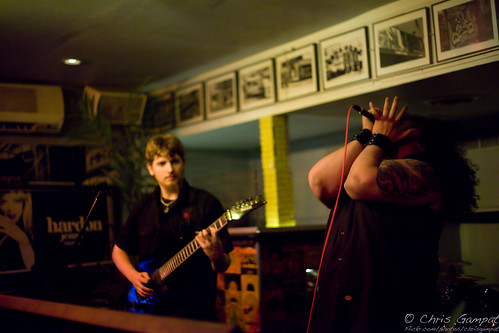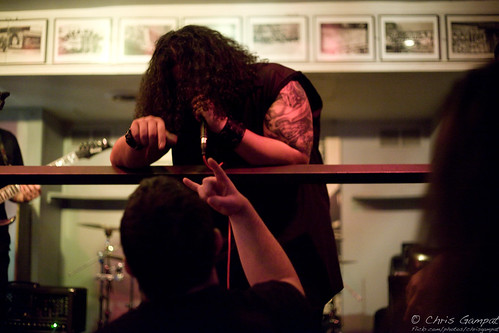We’ve talked before about the essence of concert photography and using video during a concert to supplement your stills. Now you’re at the point where you want to start shooting them more. You need to ensure that you’ll have great photos because the band may want to use them for their myspace or you’ll want to use them for your portfolio when showing clients. Here are some tips to help you start off.
Shoot with Fast Lenses
When using my Canon 5D Mk II, I’ve brought along my 50mm F1.8 II, 80-200mm F2.8 L, and my 24-105mm F4 L IS. After realizing that a lot of the venues I shoot in are dark with various colored lights, I’ve stuck with only the fast lenses. Further, I’ve only shot with my 50mm.
Unless you are shooting is a major venue, chances are that lighting is going to be very lame. In that case, you’ll either need to bring your own lighting setup or shoot with fast lenses and follow the second tip.
Crank Your ISO Up
It’s not unusual for me to shoot on ISO 3200 or 6400 these days when shooting a concert. The reason why is because this way I’m able to capture fast motions without washing out the natural colors and feel of the concert. That means that the drummer going crazy, the bassist doing some solo or the movements of the frontman can be captured with ease.
To be fair, I use a full frame DSLR. However, most DSLRs these days can be cranked up to ISO 1600 and beyond without any fear. The other day I was reading about how the Nikon D90 has better high ISO image quality than the Nikon D300. While the former is a lower grade camera, it
allows the photographer to shoot with confidence that their high ISO images will be still quite usable.
Capture the Energy
Each band, depending on their genre has a different energy or vibe that they give off. In general, hardcore punk is chaotic, metal is aggressive, acoustic alternative can be fun and jazz can be smooth and sexy. Then again, each musician is to their own and their personalities come out in the music. You can capture who they are and the type of people that they are just by observing and documenting them, their facial expressions, their playing style etc.
Of course this is easier said than done. If you just watch for those critical moments and trends in their movements, you’ll pull it off.
(Editor’s note – For a great look into “capturing the moment,” take a stroll over to Zack Arias’ recent Photography Critique: Episode 11 where Zack looks at the portfolio of Allen Ross Thomas at ArtistXposure.com. Zack’s critique of Thomas’ site and work is about 19:40 into the video. As Zack says, “If you’re shooting live concerts, it’s really about the moment.”)
Read The Frontman’s Body Language
In most cases, the frontman is the one that captivates and moves the crowd. Good frontmen will draw the crowd’s attention to them, involve the crowd and keep them enthralled with the music. Each frontman does this differently with his/her own touch but they all have influences from the concerts they’ve been to. For example, progressive rockers may mimic John Lennon or Jimi Hendrix. Punks may have influences of anyone from Dexter Holland to Johnny Ramone to Fat Mike. All frontmen are excited to basically be putting on a show and perform.
If they’re timid, try searching for a more forward band member and focus on them.
Step Back and Capture Fan Interaction
Capturing the interaction between the band and their fans is so important because it shows a sense of connection. In photojournalism, you’re taught to pay attention to moments that are emotional and intimate. In band photography, these moments may be rare or may happen all the time but either way it shows how the bond between the band and their fans. These are the real moments that you need to look out for. Both the band and their fans love seeing these. In addition, your portfolio will shine if you can show these off and capture them correctly.
What tips do you have to share?






I’m not sure if it was covered in the previous installment of this series, but shoot lots. And lots.
For this series of 15 shots: http://www.flickr.com/photos/adam1975/sets/72157622374091771/ I shot over 900 frames. I used a Nikon D300, MB-D10 battery grip (gives me 8FPS) and a 50mm F/1.8 lens. The more you shoot, the more change you have of one frame frame from the burst of 20 shots being the hero shot.
Nice work Adam. Good tip too.
This is my fave from the set: http://www.flickr.com/photos/adam1975/3973856706/in/set-72157622374091771/